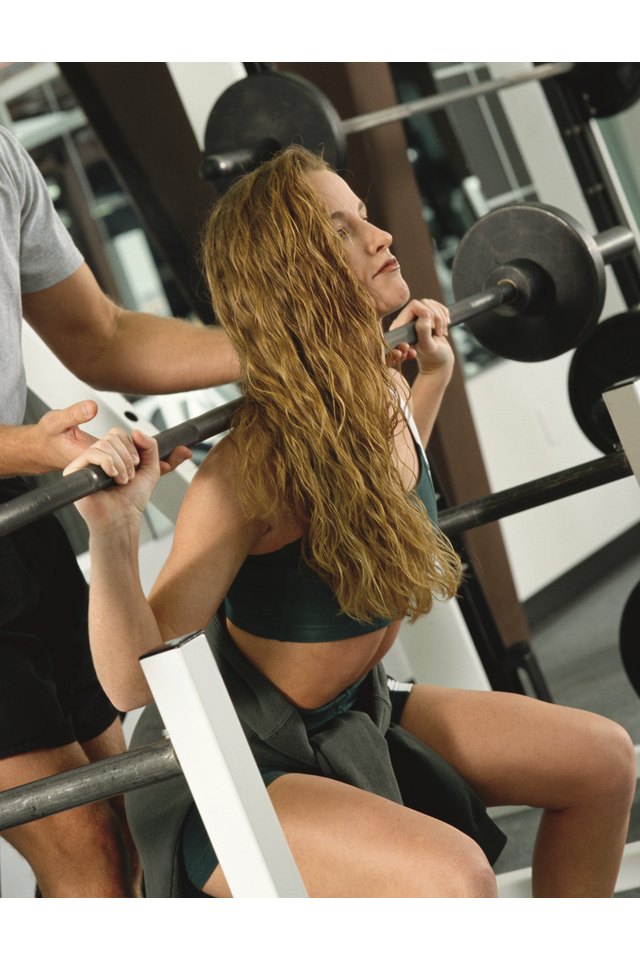What Plane of Motion Is the Squat In?

Kinesiologists describe the movement of joints in the body in terms of three planes oriented at right angles to one another: the sagittal, frontal and horizontal planes. The primary action of a squat takes place in the sagittal plane, but some movement occurs in the other two planes as well.
Planes of Motion
Planes of motion are defined in reference to the anatomical position: standing upright with your palms facing forward. The sagittal plane divides the body into right and left halves. Forward and backward movement takes place in the sagittal plane. The frontal plane splits the body into front and back halves. Side-to-side movement occurs in this plane. The horizontal or transverse plane divides the body into upper and lower halves. Rotational movements take place in the horizontal plane.
Squatting
The squat starts from a standing position, with the feet shoulder-width apart and slightly turned out. Keeping the spine extended, you sit back and down with the hips, then immediately stand back up. In the back squat, you hold a barbell across your upper back and shoulders, keeping it in place with your hands. In the front squat variation, the barbell is in front, resting on your shoulders and fingers with your elbows lifted.
Sagittal Plane Movements
The primary movements in a squat are flexion and extension. Those movements take place in the sagittal plane. Lowering into a squat, you flex your hips and knees, and dorsiflex your ankles. When you stand up, your hips and knees extend and the ankles plantarflex. If you are holding a barbell, your elbows are flexed. In the back squat, your upper arms will be extended slightly backwards, while in a front squat, they will be flexed in front of you.
Movement in Other Planes
Squatting with your feet turned out also creates some lateral movement of your thighs, termed abduction and adduction, as you lower down and stand up. Those movements occur in the frontal plane. The thighs also rotate as you squat, which happens in the horizontal plane. In a back squat, because your hands are be a little wider than shoulder width, your arms are be somewhat abducted, another frontal plane action.
References
- Kinesiology of the Musculoskeletal System: Foundations for Rehabilitation; Donald A. Neumann
- Essentials of Strength Training and Conditioning; National Strength and Conditioning Association
- Starting Strength; Mark Rippetoe and Lon Kilgore
Resources
Writer Bio
Joe Miller started writing professionally in 1991. He specializes in writing about health and fitness and has written for "Fit Yoga" magazine and the New York Times City Room blog. He holds a master's degree in applied physiology from Columbia University, Teacher's College.
